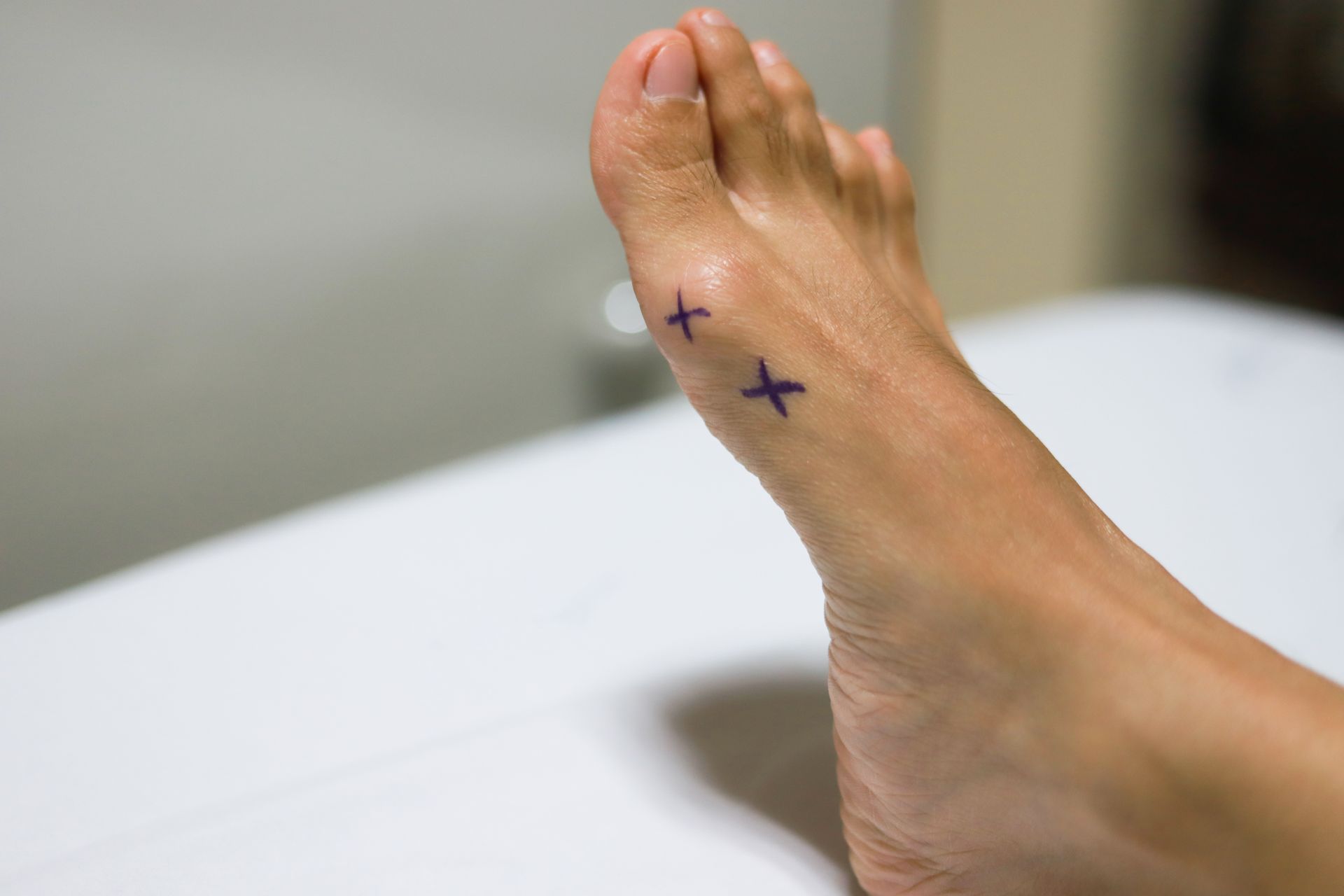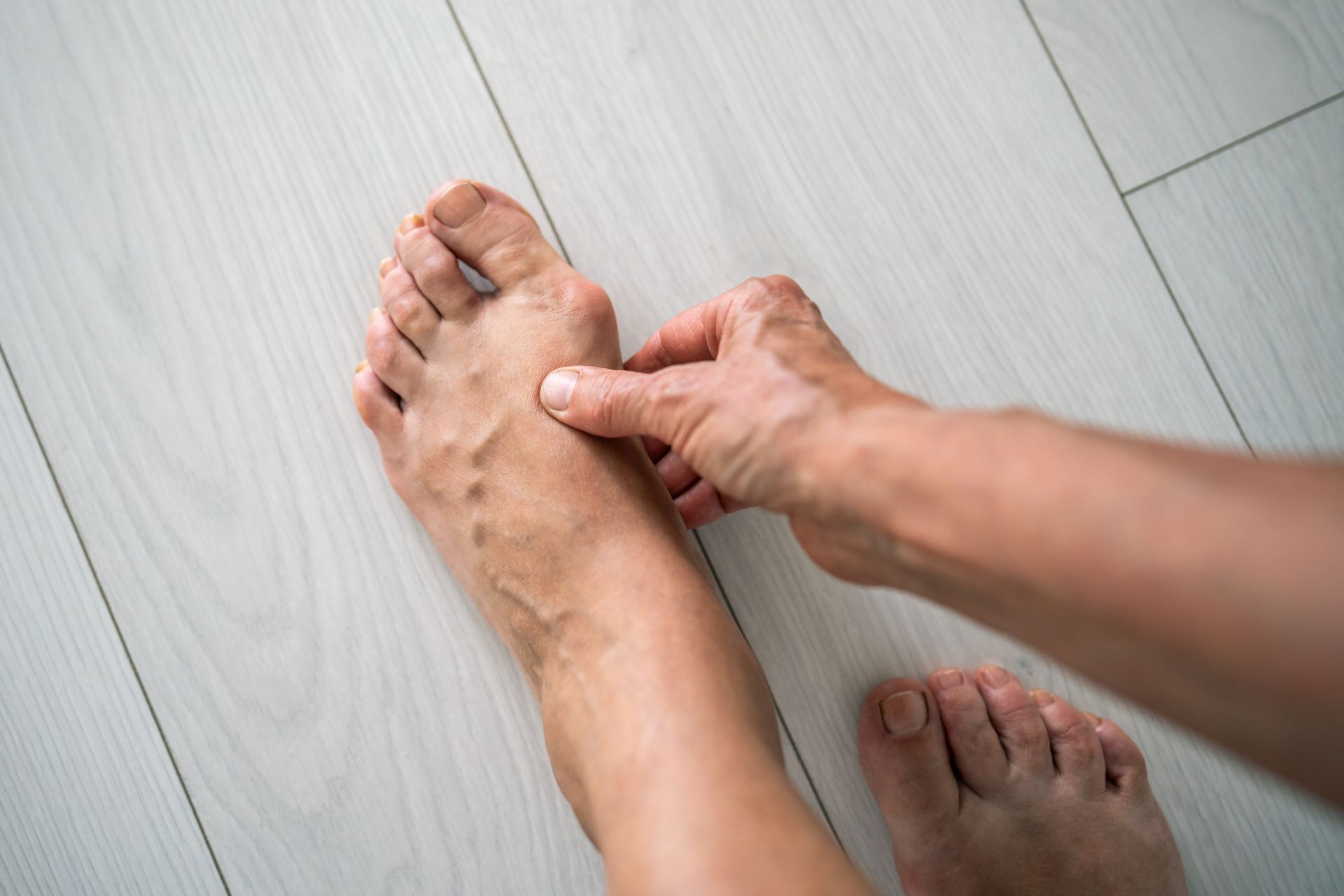Diagnosing and Treating Morton's Neuroma in Baton Rouge
What is a Morton's Neuroma?
A Morton’s Neuroma is among the 5 or 10 most common causes of foot pain. It is a benign thickening of a normal nerve that runs between the second and third or the third and fourth toes. A Neuroma causes pain along the ball of the foot (or forefoot).
Symptoms of Morton's Neuroma
Morton’s Neuroma causes burning, tingling and numbness along the ball of the foot. Pain typically radiates between the third and fourth toes.Patients often describe a “bunched sock” feeling or the sensation of walking on a pebble. Symptoms are usually alleviated by rest or removing a shoe.
Risk Factors for Morton's Neuroma
It isn’t well-known exactly what causes some people to get a neuroma and why it can occur in one foot and not in the other. However, there are some common risk factors that have been identified for developing a neuroma:
- Activities - Neuromas are seen more frequently in activities that place increased pressure along the forefoot and toes. This includes soccer, ballet, running and others.
- Shoe Type - A heel exceeding 2 inches places increased strain on the forefoot. Narrow or pointy-toed shoes, like certain dress shoes, boots and some athletic cleats, can squeeze the toes together too much.
- Foot Structure- A high arched foot can place more stress on the ball of the foot. Conversely, a foot that is excessively flexible can irritate the nerves of the forefoot, creating a neuroma.
Diagnosing a Morton's Neuroma
Patient description of location, quality and frequency of pain is the first indicator of a neuroma. Physical exam will help localize the neuroma and rule out other causes of pain in the area. A test called “Mulder’s sign”elicits the symptoms by squeezing the forefoot from side-to-side.
X-rays primarily reveal bony details. As such, neuromas do not show on routine x-rays. However, x-rays are helpful in eliminating concern for arthritic conditions, stress fractures and other differential diagnoses. An ultrasound or an MRI can be helpful in atypical or difficult-to-diagnose cases.
Conservative Treatment for Morton's Neuroma
A Morton’s Neuroma will not usually go away on its own, but most resolve with non-surgical treatments. The first step in treating a neuroma is usually a shoe modification. This can be as simple as adding a shoe insert called a metatarsal pad or changing to a stiffer, more supportive shoe type. Other conservative treatments include custom orthotics and various types of injections.
Differential Diagnoses for Morton's Neuroma
In addition to Morton’s Neuroma, there are other potential conditions which can result in similar symptoms and types of pain. These include:
- Stress Fractures- A subtle or minor stress fracture can cause similar pain to a neuroma in a similar location.
- Metatarsalgia- This is a generalized term for pain on the ball of the foot. The more specific term “capsulitis” is the inflammation of the ligaments on the bottom of one or more joints of the forefoot.
- Bursa or Cyst- A localized inflammation around a joint can create bursa in the forefoot. Also, a benign accumulation of fluid called a ganglion cyst can occur.
Surgical Treatment for Morton's Neuroma
Most patients respond favorably to non-surgical treatments of Morton’s Neuroma. Surgery for neuroma involves making an incision on the top of the foot and carefully removing the swollen, inflamed portion of nerve. In some cases, the neuroma is removed from an incision on the bottom of the foot. Most patients recovering from neuroma surgery are back in a regular shoe at 4-6weeks post-operative. This range can vary based on age, size and individual patient health.
If you are suffering from foot pain or symptoms similar to those causes by neuroma, a podiatrist should be consulted for a thorough examination and proper diagnosis. From there, treatment recommendations can be made. In the Baton Rouge area, Dr. Patrick Hall is a board-certified podiatrist treating all manner of conditions affecting the foot, including Morton’s Neuroma.


